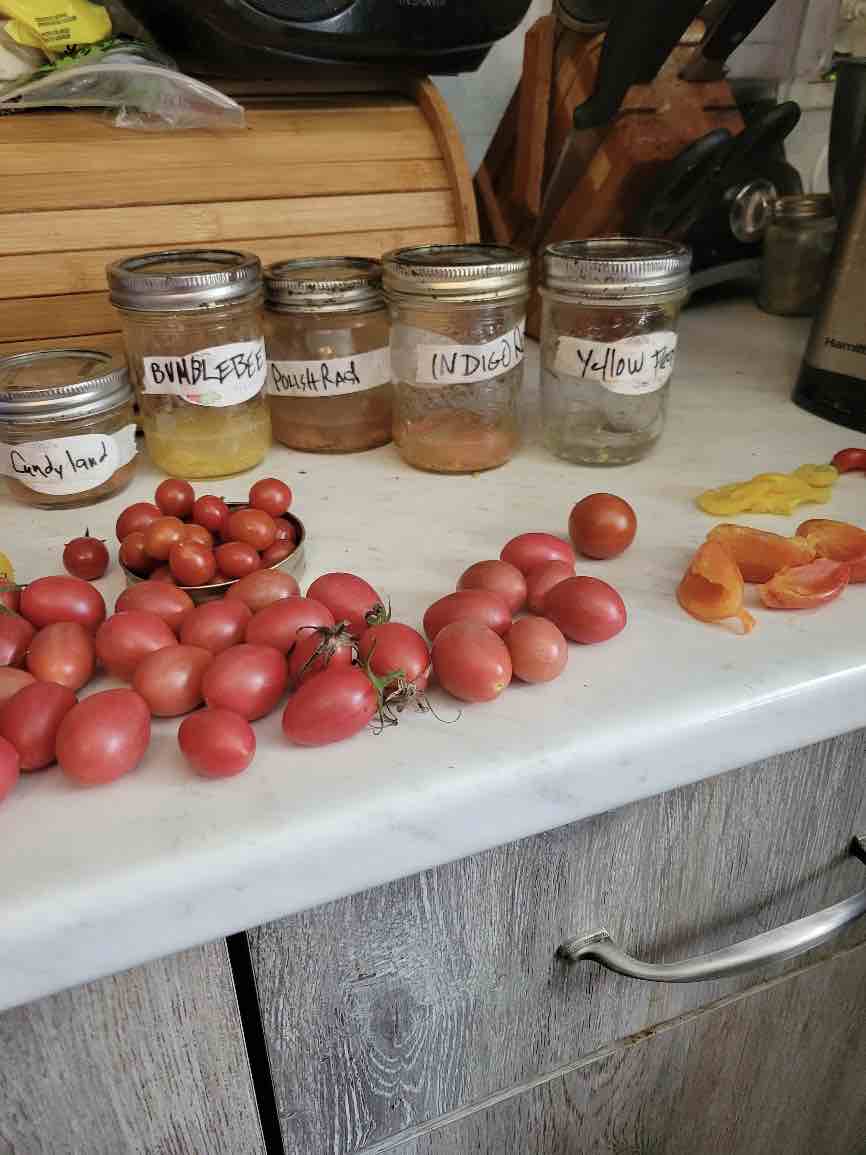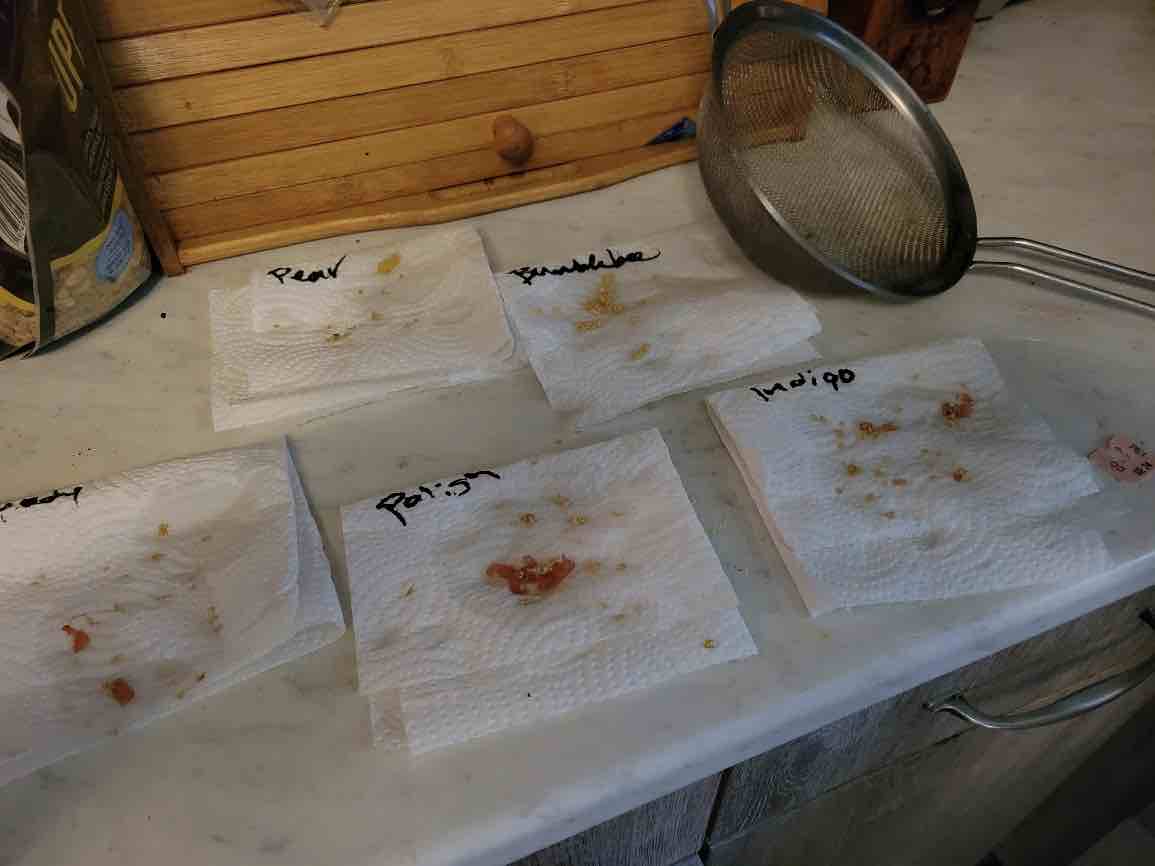Your cart is currently empty!
Growing Microgreens from Seed
Growing microgreens from seed does not require a fancy set-up. You can use a plastic tray with drainage holes with a see-through lid.
Your cart is currently empty!
Photo:
Judith Cox
Judith discusses a slightly different method of saving tomato seeds, which involves fermenting the seeds to improve their quality.
It is a dark morning with mist and fog. It would seem that autumn has sneaked in when I was not looking. The temperatures are starting to drop, so I am watching for frost. So far, I still have vegetables and seeds to harvest but I am not too concerned.
I have several plants that are ready for seed harvesting, but I can’t do that right now. It is too wet. If I harvest the seeds while they are wet, then I risk mold and mildew on my seeds and a lack of germination. As seed harvesters, we need to wait for a couple of bright sunny days and save our seeds when they are dry.
I have decided to try a slightly different method of saving my tomato seeds. From a freshly picked batch of tomatoes, I chose healthy ripe ones to save. Then, cut them open, scooped up the seeds and put them in a jar with some water. This will cause the seeds to ferment which is supposed to improve the quality of the seed.
Once they are in the jar, I swirl them every day for three to five days.

After a few days, I put the seeds from each jar in a sieve, run cool water over them to get them clean and then place on a paper towel to dry.
I usually put seeds from my tomatoes directly onto paper towels to dry and I shall do that as well. I am looking forward to planting each method in the spring and seeing if the fermentation makes a difference.

Here’s what I wrote previously on collecting tomato seeds.
I have noticed that the birds are going through the bird seed that I put out in a very timely fashion. Many goldfinches are here looking for niger seeds and they are also checking out the seeds on my mullein. The chickadees peek in the window to remind me to fill the feeder, much to the delight of the too-many cats who enjoy watching the daily drama of the bird feeder. Soon the blue jays and cardinals will be wanting more seeds, and the woodpeckers will be busy as well. I watch as the woodpeckers take a seed from the feeder and carefully place it into the bark of the tree. I think it is storing the seed for later. Unfortunately, it doesn’t stay there very long, the squirrels come along and pull out all of the stored seeds.
Keep an eye on the weather if you are worried about frost. You can cover up tender plants and protect them for a while yet. I am waiting to harvest my carrots as they get sweeter if they are left in the ground after the first couple of frosts. Now I am waiting for a sunny, dry day so I can finish harvesting my seeds. Enjoy your week. Judith (Email: sghorticultural@gmail.com) Veggie Bites are available at https://sghorticultural.wixsite.com/website or https://gardeningcalendar.ca/articles/veggie-bites/
Growing microgreens from seed does not require a fancy set-up. You can use a plastic tray with drainage holes with a see-through lid.
Discover the beauty of Nongnooch Tropical Botanical Garden nestled south of Bangkok. Join us in this unique and immersive experience.
Basic orchid care attempts to recreate the habitat in which a certain variety of orchid developed. We discuss how to care for orchids.
Experience excellence beyond North American borders! The VBG was awarded the 2022 "Garden Excellence Award" presented by the APGA. Now's your chance to help us take the Garden to even higher levels of excellence as a top tourism generator & cultural icon in Puerto Vallarta & Mexico. Join us!
Here are 8 different plants which attract hummingbirds, with details of their origin, life cycle, and appearance.
Discover how to attract pollinators like bees, butterflies, and hummingbirds to your garden with these expert gardening tips.
GardeningCalendar.ca gets some funding from advertisers. If you click on links and advertisements at no cost to you, the site may receive a small commission that helps fund its operation.
© 2025 J&S Calendars Ltd.
Leave a Reply
You must be logged in to post a comment.